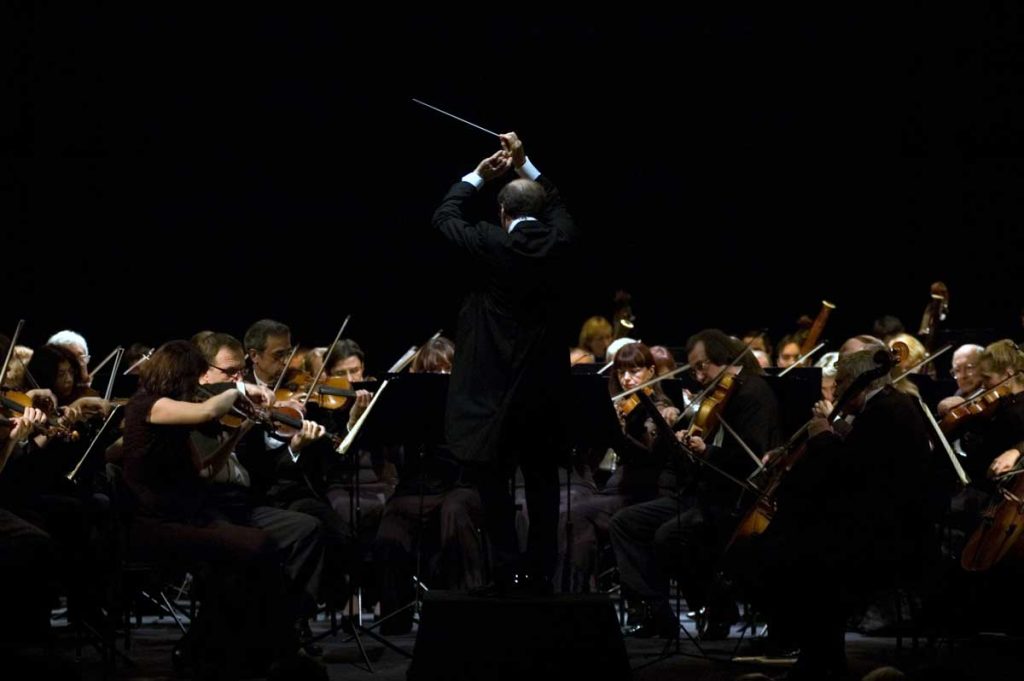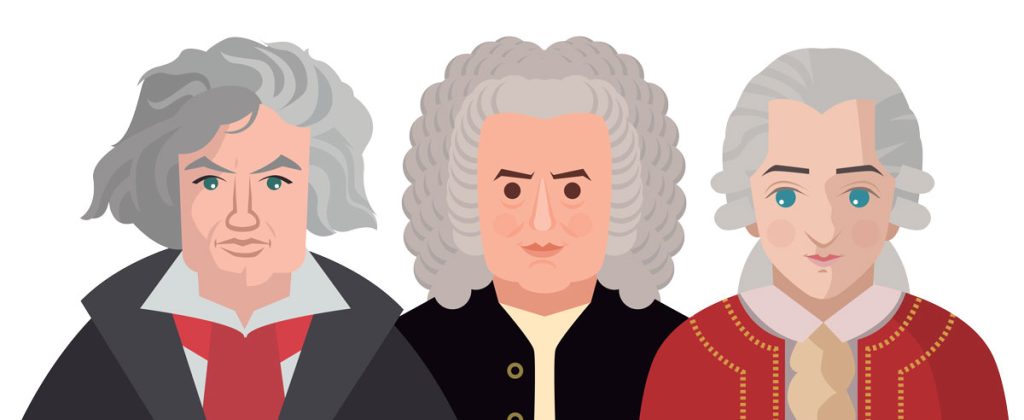What is classical music? To some, it is the sound of elegance and refinement. To others, it evokes a sense of timelessness and beauty. In this captivating article, we embark on a journey to uncover the essence of classical music, exploring its origins, defining characteristics, and enduring allure. Join us as we delve into the historical roots of this beloved art form, discover its distinct features, and appreciate the enduring legacy that has captivated audiences for centuries.
I. Origins of Classical Music:
To truly understand classical music, it is essential to explore its historical origins. The roots of classical music can be traced back to the Medieval, Renaissance, and Baroque periods, where the foundations of Western music were laid.
In the Medieval era, sacred music thrived with the enchanting melodies of Gregorian chants, which filled the grand cathedrals and monastic halls. As music progressed into the Renaissance period, the intricate interplay of polyphonic compositions emerged, showcasing the genius of composers such as Josquin des Prez and Giovanni Pierluigi da Palestrina.
However, it was during the Baroque period that classical music truly began to take shape. The Baroque era witnessed a shift towards more elaborate and ornate compositions, with towering figures like Johann Sebastian Bach, George Frideric Handel, and Antonio Vivaldi leading the way. Their masterpieces showcased intricate counterpoint, virtuosic instrumental performances, and the birth of the concerto, opera, and oratorio forms.
These historical periods laid the groundwork for the emergence of classical music as we know it today. Through the evolution of musical styles and forms, classical music evolved from its humble beginnings to become a profound and sophisticated art form that has transcended time and continues to captivate audiences worldwide.
II. Defining Characteristics:
Classical music possesses a myriad of distinct features that contribute to its timeless appeal and enduring popularity. Let’s explore these defining characteristics in greater detail:
Balance and Symmetry
Classical compositions exhibit a remarkable sense of balance and symmetry. Composers meticulously organise musical themes and motifs, creating a cohesive structure and form. The development and resolution of musical ideas flow seamlessly, embracing order, clarity, and a sense of aesthetic equilibrium.
Melodic Beauty
One of the most celebrated aspects of classical music is its enchanting melodies. These melodies are often deeply expressive, evoking a broad spectrum of emotions. From melancholic laments to triumphant fanfares, classical music weaves captivating and memorable melodic lines that resonate with listeners long after the music has ceased.
Dynamic Range and Contrast
Classical music encompasses a wide dynamic range, spanning from delicate whispers to powerful climaxes. Composers expertly employ contrasts in volume, texture, and mood to create a captivating sonic journey. The interplay between soft and loud passages, tranquil and turbulent moments, adds depth, drama, and a sense of heightened emotional impact.
Harmonic Sophistication
Classical music boasts a sophisticated harmonic language that explores the interplay of chords and their relationships. Composers employ intricate harmonic progressions, resulting in harmonies that create tension, release, and emotional depth. The manipulation of harmonies enhances the overall expressiveness and complexity of classical compositions.
Development and Variation
Composers of classical music often engage in the development and variation of musical themes throughout a composition. Through techniques such as thematic development, counterpoint, and transformation, they skillfully expand and reshape musical ideas. This intricate development and variation add layers of complexity, cohesion, and musical storytelling, captivating and engaging the listener throughout the journey.
These defining characteristics of classical music collectively contribute to its enduring allure. The balance and symmetry, melodic beauty, dynamic range and contrast, harmonic sophistication, and the art of development and variation intertwine to create a vast and rich musical landscape that continues to captivate and inspire audiences across generations.

III. Classical Forms and Genres:
Classical music encompasses a diverse range of forms and genres that showcase its versatility and breadth of expression. Let’s delve into some of the prominent forms and genres, unveiling the unique characteristics and structures that define each:
Symphonies
Symphonies are grand orchestral compositions that typically consist of multiple movements. Composers such as Ludwig van Beethoven, Wolfgang Amadeus Mozart, and Franz Joseph Haydn expanded the symphony form, often comprising four movements. These movements, including the lively and sonata-form-based first movement, the lyrical slow movement, the energetic scherzo or minuet, and the vibrant finale, offer a rich musical narrative.
Sonatas
Sonatas are compositions typically written for solo instruments or small ensembles. Solo sonatas, such as those composed for piano or violin, often consist of three movements: the fast and virtuosic first movement, the expressive slow movement, and the lively and spirited final movement. Sonatas for small ensembles, known as chamber sonatas, explore the interplay between multiple instruments.
Concertos
Concertos are compositions that feature a solo instrument accompanied by an orchestra. The concerto form allows for the soloist to showcase their technical prowess and musicality, engaging in a dialogue with the orchestra. Traditionally structured in three movements, concertos often begin with an orchestral introduction, followed by the virtuosic soloist taking the spotlight in the subsequent movements.
Operas
Operas are grand theatrical productions that combine music, singing, acting, and stagecraft. They tell stories through a combination of vocal performances and orchestral accompaniment. Opera compositions feature arias (solo vocal pieces), recitatives (dialogue-like vocal passages), choruses, and ensemble numbers. Composers like Wolfgang Amadeus Mozart, Giuseppe Verdi, and Richard Wagner have crafted renowned operas that span a wide range of emotions and narratives.
Chamber Music
Chamber music refers to compositions intended for small ensembles, typically performed in intimate settings. String quartets, composed for two violins, a viola, and a cello, are a prominent example of chamber music. These compositions allow for intricate interactions between the instruments, showcasing the art of musical conversation and collective expression.
Choral Music
Choral music involves vocal compositions sung by a choir, often accompanied by an orchestra. This genre encompasses diverse forms, including choral symphonies, oratorios, masses, and motets. Choral music combines the power of collective voices to create rich harmonies, powerful melodies, and profound emotional impact.
These are just a few examples of the myriad forms and genres within classical music. Each form and genre brings its own unique structures, instrumentation, and expressive possibilities, contributing to the vast and ever-evolving tapestry of classical music’s rich heritage.

IV. The Great Composers:
No exploration of classical music is complete without acknowledging the genius of the great composers who have shaped its extraordinary legacy. During the classical era, from the 18th to the early 19th century, a remarkable group of composers emerged, leaving an indelible mark on the world of classical music. Let’s pay tribute to some of these musical pioneers and the timeless works they created:
Johann Sebastian Bach (1685-1750)
Regarded as one of the greatest composers in Western musical history, Bach’s compositions spanned multiple genres, including choral music, concertos, and fugues. His unparalleled mastery of counterpoint, intricate harmonies, and profound musical expression paved the way for future generations.
Wolfgang Amadeus Mozart (1756-1791)
Mozart, a child prodigy and prolific composer, is celebrated for his exquisite melodies, brilliant orchestration, and effortless ability to traverse various musical forms. His symphonies, concertos, operas, and chamber music captivate listeners with their emotional depth, technical brilliance, and timeless beauty.
Ludwig van Beethoven (1770-1827)
Beethoven, a visionary composer, revolutionised classical music, bridging the gap between the classical and romantic eras. His compositions, marked by emotional intensity, dramatic power, and bold innovations, shattered conventions and continue to inspire awe and admiration.
Franz Joseph Haydn (1732-1809)
Haydn, known as the “Father of the Symphony” and the “Father of the String Quartet,” played a crucial role in the development of these forms. His rich and expressive compositions are characterised by inventive melodies, clever musical surprises, and a playful spirit.
Frederic Chopin (1810-1849)
Chopin’s music, primarily composed for the piano, exhibits unmatched lyricism, expressive depth, and technical brilliance. His compositions, such as his nocturnes, preludes, and ballades, reveal his profound sensitivity and gift for capturing a wide range of emotions.
Pyotr Ilyich Tchaikovsky (1840-1893)
Tchaikovsky’s music is renowned for its lush melodies, evocative orchestration, and powerful emotional impact. From his symphonies to his ballets, such as “Swan Lake” and “The Nutcracker,” Tchaikovsky’s works are cherished for their sheer beauty and ability to stir the soul.
These composers represent just a fraction of the remarkable talents that emerged during the classical era. Each contributed in their own unique way, pushing the boundaries of musical expression and leaving an enduring legacy. Their compositions continue to captivate and inspire listeners, transcending time and reminding us of the profound beauty and power of classical music.
V. The Enduring Allure:
Classical music possesses an enduring allure, captivating audiences worldwide with its timeless qualities. It transcends cultural boundaries, evoking a broad spectrum of emotions and fostering connections among listeners. By transporting us to transcendent realms, classical music invites us on transformative journeys beyond the confines of daily life.
The intellectual and aesthetic stimulation offered by this art form engages both the mind and the senses. Its intricate structures, harmonies, and craftsmanship encourage active listening and contemplation. The enduring appeal of classical music, spanning generations, serves as a testament to its universal and timeless nature. It speaks to the essence of the human experience, preserving a rich cultural heritage that connects us to the past.
In essence, the allure of classical music lies in its ability to evoke emotions, transport listeners, stimulate intellect, and transcend temporal and cultural boundaries. It continues to inspire and resonate, leaving an indelible mark on the hearts and minds of those who encounter its profound beauty.
Conclusion:
As we conclude our exploration of classical music, we have gained a deeper understanding of its origins, defining characteristics, and timeless allure. Classical music is more than just a collection of notes; it is an art form that transcends time and speaks to the depths of the human experience. Its melodies, harmonies, and structures captivate our hearts and minds, transporting us to realms of beauty and emotion.
Embrace the richness of classical music, let its melodies stir your soul, and allow its enduring legacy to inspire and uplift. Whether you are a seasoned connoisseur or a curious newcomer, the world of classical music welcomes you with open arms. So, immerse yourself in its splendour, explore its vast repertoire, and embark on a lifelong journey of discovery and appreciation.



